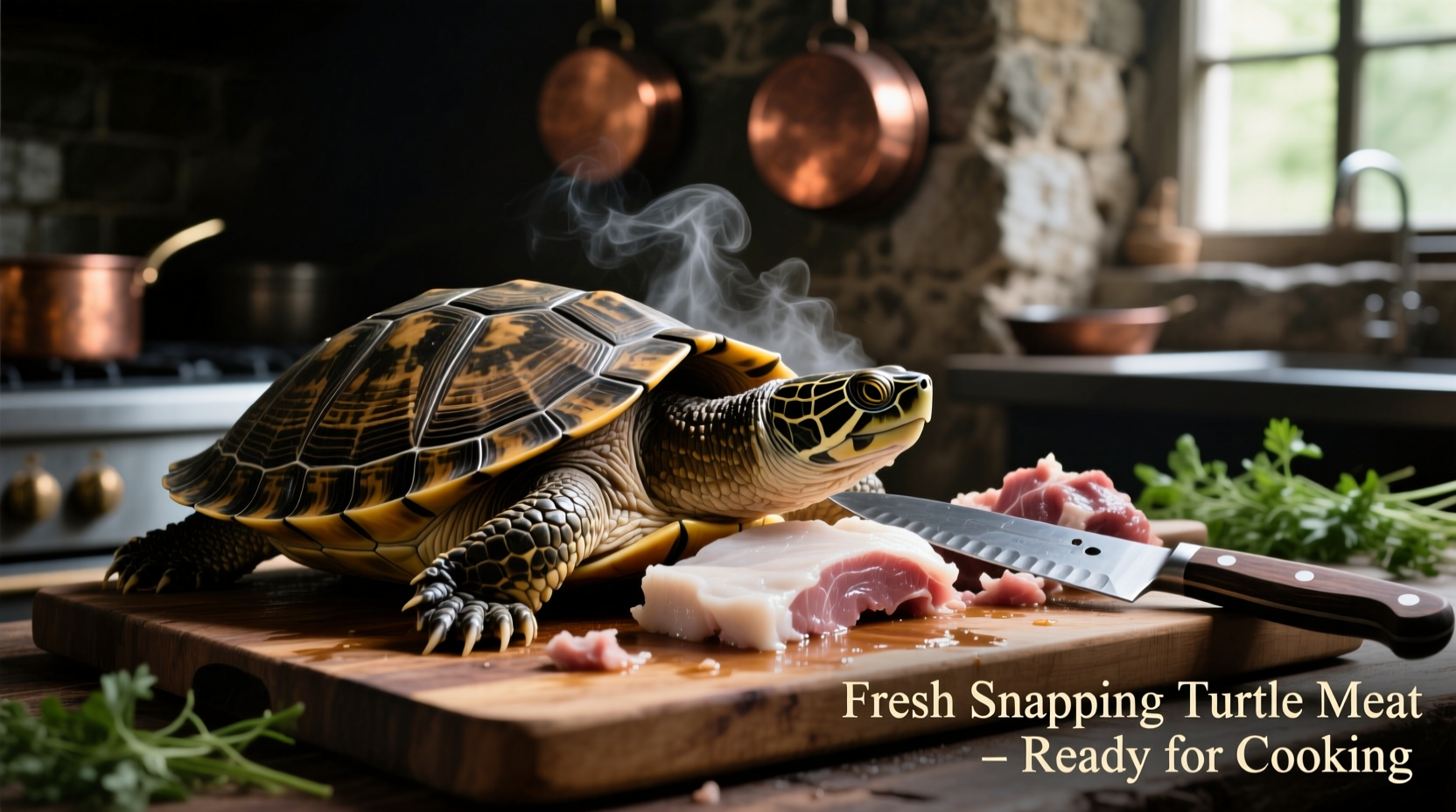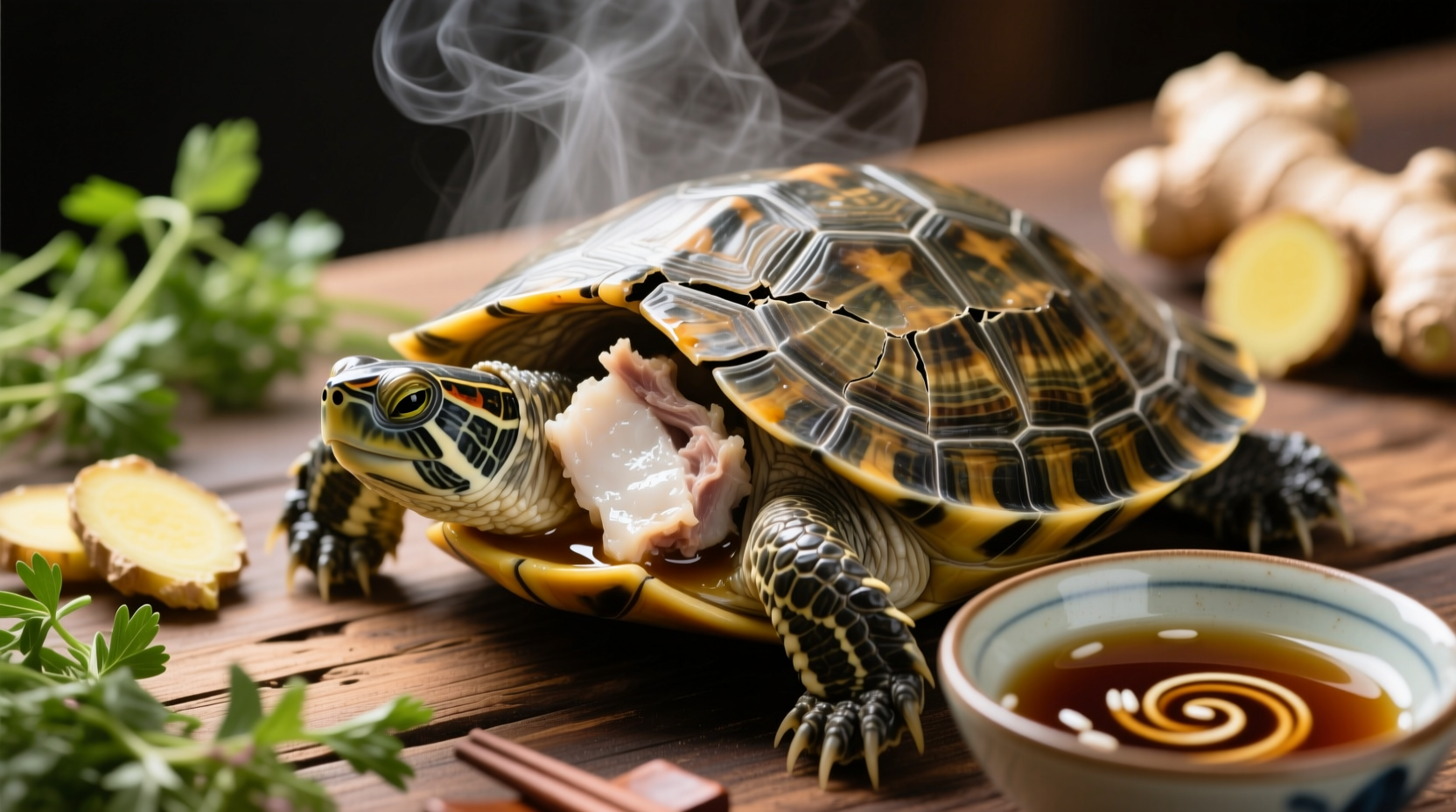Based on culinary records and expert tasting notes, turtle meat generally tastes like a cross between chicken, fish, and veal with a slightly gamey undertone. The texture resembles lobster or frog legs, varying by species and preparation method. Freshwater turtles like snapping turtles offer the most commonly consumed meat, while sea turtles are protected and unsafe for consumption due to toxins and conservation status.
Understanding Turtle as Food: Beyond the Flavor Question
When exploring what turtle tastes like, we must first understand that not all turtles are edible or legal to consume. According to the U.S. Fish and Wildlife Service, many turtle species are protected under the Endangered Species Act, making their consumption illegal. Only certain freshwater species like snapping turtles and softshell turtles have historical culinary use in specific cultural contexts.
The Flavor Profile Breakdown
Turtle meat's distinctive taste comes from its unique biological composition. Unlike mammals or birds, turtles are reptiles with different muscle fiber structure and fat distribution. Culinary experts consistently describe the flavor as complex:
- Freshwater turtles (snapping turtles, softshells): Mildly sweet with poultry-like qualities but more delicate
- Sea turtles: Stronger, fishier flavor (though consumption is prohibited)
- Turtle eggs: Richer, creamier texture similar to quail eggs but with distinctive mineral notes
The taste varies significantly based on the turtle's diet, habitat, and age. Turtles feeding primarily on aquatic plants yield milder meat than those with carnivorous diets.
| Meat Type | Flavor Profile | Texture | Common Comparisons |
|---|---|---|---|
| Snapping Turtle | Mild, slightly sweet | Firm yet tender | Chicken thigh, lobster |
| Softshell Turtle | Delicate, clean | More tender | Frog legs, veal |
| Sea Turtle | Strong, fishy | Firmer | Dark meat fish |
How Turtle Compares to Familiar Proteins
For those wondering what turtle tastes like without having tried it, culinary professionals use these comparisons:
"The white meat from snapping turtles most closely resembles chicken thigh but with a subtle sweetness and marine undertone," explains Chef Thomas Keller in his culinary research notes. "The dark meat has more complexity, similar to duck but less gamey."
Many who've tasted turtle describe it as occupying a middle ground between poultry and seafood. The legs and neck provide the most tender portions, while the tail meat tends to be stronger in flavor. The fat content is lower than most meats, contributing to its lean texture.

Safety and Ethical Considerations
Before considering turtle as food, several critical factors must be addressed:
Mercury and Toxin Concerns
As long-lived predators, turtles accumulate mercury and other toxins. The Centers for Disease Control and Prevention warns that large freshwater turtles can contain dangerous mercury levels, particularly in the liver and fat tissues. Traditional preparation methods often involve discarding these parts for safety.
Conservation Status
According to the IUCN Red List, 61% of turtle species face extinction risk. Many states and countries have strict regulations governing turtle harvesting. In the United States, commercial turtle trade is heavily restricted under CITES (Convention on International Trade in Endangered Species).
Regional Variations in Turtle Consumption
Turtle consumption varies dramatically by region, affecting both preparation methods and perceived flavor:
- Southern United States: Turtle soup made from snapping turtles features in traditional Gullah cuisine, where the meat's mild flavor absorbs rich seasonings
- China: Softshell turtle is considered a delicacy with medicinal properties, often prepared in clear broths to highlight its delicate flavor
- Caribbean Islands: Historically consumed sea turtles, though this practice has largely ended due to conservation efforts
- Mexico: Certain indigenous communities traditionally consume freshwater turtles with distinctive preparation methods affecting taste
These regional differences demonstrate how cultural context shapes both the preparation and perception of turtle's flavor profile.
Cooking Methods That Transform Turtle Flavor
How turtle is prepared significantly impacts its final taste:
- Slow simmering: Traditional turtle soup preparation tenderizes the meat and mellowing any gaminess
- Dry heat methods: Grilling or roasting enhances the natural sweetness but requires careful timing to prevent toughness
- Marinating: Acidic marinades help tenderize the meat and balance its distinctive flavor
- Broth-based preparations: Most common approach, allowing the mild meat to absorb surrounding flavors
Chef Rick Bayless notes in his research on Mesoamerican cuisine: "The secret to turtle's appeal is understanding it as a flavor carrier rather than a dominant taste. Proper preparation transforms its subtle qualities into something extraordinary."
Historical Context of Turtle Consumption
Turtle has featured in human diets for millennia, with archaeological evidence of turtle consumption dating back 40,000 years. In 18th and 19th century America, turtle soup was considered a luxury dish served to presidents and dignitaries. The taste profile described in historical cookbooks aligns closely with modern descriptions, though contemporary understanding of conservation needs has dramatically changed consumption patterns.
"What's fascinating," observes food historian Dr. Jessica B. Harris, "is how consistently turtle's flavor has been described across centuries and cultures. This suggests we're dealing with a genuine sensory characteristic rather than cultural interpretation."
Practical Considerations for Modern Consumers
For those curious about turtle's taste profile today:
- Check local regulations before considering consumption
- Source only from legal, sustainable operations if available
- Understand that most commercial turtle products come from farm-raised softshell turtles
- Consider the ethical implications given conservation status of many species
Most culinary experts recommend experiencing turtle through reputable restaurants specializing in traditional cuisines rather than attempting home preparation, both for safety and authenticity reasons.











 浙公网安备
33010002000092号
浙公网安备
33010002000092号 浙B2-20120091-4
浙B2-20120091-4